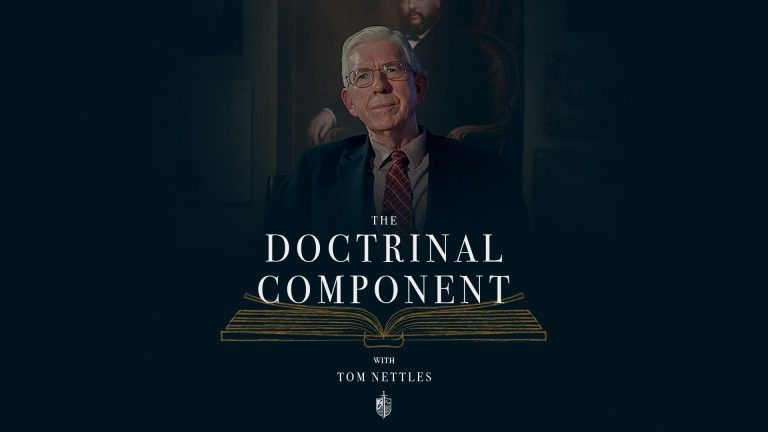Sow to the Spirit, Look to the Son
The book of John was written that those who read it would believe that “Jesus is the Christ, the Son of God, and that believing they would have life in his name” (John 20:31). To make this belief based on the truth deduced from demonstrable facts, John recorded many pivotal signs that Jesus did, claims that Jesus made, conversations that he had, conclusions drawn by immediate observers of his life and actions, his resurrection and subsequent appearances and conversations, and John’s personal statement of the authenticity of all these things (John 21:24). His testimony carries the weight of both eyewitness and apostle. One of the themes threaded throughout this narrative is the inauguration of the new covenant to be established on a faith wrought by the new birth (John 1:11-13). The movement goes from identification of the covenant people through ethnic, fleshly, external categories to the inception of the New Covenant people through the work of Christ and the operations of the Spirit. It is rather an explanation of how God will make the new covenant successful. Jesus explains this in some detail to a learned religious leader of the Jews, Nicodemus, in this chapter. The chapter then ends with an exceptional manifestation of the prophetic witness of John the Baptist.
I. Nicodemus, a ruler of the Jews, learns about the new birth.
A. Not only physical sight, but spiritual sight is necessary.
1. Nicodemus’s conclusions are not entirely wrong, but short enough to make an eternal difference: “We know you are a teacher come from God” He had looked at the signs and drew the right conclusion that he was empowered by God. As 2:23 has let us know, however, many were believing in Jesus on the basis of the signs, but Jesus knew that their belief, with few exceptions, was mere external assent to his claim to be from God. The effects of sin on the heart kept them from seeing their true spiritual need.
2. The new birth introduces into one’s perception the true realities of the Kingdom of God – “Unless one is born again, He cannot see the kingdom of God.” What does “see” mean? Seeing means an inner spiritual perception of the reality of the righteousness of the Kingdom of God. If one does not see the beauty of holiness that constitutes the Kingdom of God, he can never want entrance into it for the sake of the glory of God.
B. Not physical birth as a natural and ethnically connected child of Abraham, but spiritual birth is necessary. This corresponds to John’s statement in 1:13 – “Who were born not of bloods.” Jesus links “born of water (5) to the subject of the new birth. The theme already has appeared and now Jesus gives it a prominent place. What does he mean? The use of water does not set forth either the element itself or the practice of baptism as having effectual power in granting the new birth. Rather, water symbolizes the purifying effect of the Word in conjunction with the completed work of Christ; Notice the prominence of water in the gospel and its relation to fulfillment of the ceremonial rites of purification and true inner knowledge of God:
1. John 1:32, 33 for the prophetic emblematic nature of baptism;
2. John 2:6, 7 where water is used to indicate the superior astringent effect of Jesus’ ministry;
3. John 3:25, 26 where the Jesus’ baptism evoked a discussion over the relation of purification to the practice of baptism;
4. John 4:10, 13, 14, 23, 24 where living water that eternally satisfies comes through the union of Spirit and Truth that Jesus alone can give;
5. John 5:1-9 where the healing waters of the pool only mediated the direct saving power of Christ;
6. John 6:35 where Jesus used the satisfying of thirst as an emblem of the finality of his redemptive work.
7. John 7:37-39, where the pouring of the water ceremony on the last day of the feast probably was the occasion of this invitation – again the purifying life-giving effects of the Spirit are symbolized by water and directly connected to Christ’s work.
8. John 9:11 where washing brings sight, even as the Spirit opens our eyes to see the glory of Christ (2 Corinthians 4:4).
C. To Nicodemus Jesus enhanced the metaphor of water with an enlargement of discussion on the Spirit.
1. Spirit – See 2 Thess 2:13 (“Sanctification of the Spirit and belief in the truth”) – The effecting of God’s elective purpose from the standpoint of its termination on us comes through the sanctifying work of the Spirit. The Spirit, according to the eternal purpose, marks off and separates the elect from the rest of mankind and grants them the disposition in accordance with which they will believe the truth. 1 Peter 1:23 – So Peter affirms that we are born by “incorruptible seed” through the living and abiding word of God.” That refers to the work of the Spirit of God through the Scripture in bringing the sinner to faith in Christ.
2. “That which is born of the flesh is flesh.” – Natural birth as a son of fallen Adam produces only a life characteristic of fallen humanity. In our natural condition we live according to the “passions of our flesh” both in body and mind and are, consequently, “by nature” children of wrath. Only a Spiritual birth establishes spiritual light and life (Ephesians 2:1-4). The flesh flows out in one’s life in actions and thoughts characteristic of the flesh and left to itself “cannot” submit to God’s Law and, therefore, cannot embrace and love the gospel. Only by the Spirit is one rescued from this deep trench of destruction. (Romans 8:5-8).
3. Sovereign Operations of the Spirit (8).
-
-
- Upon whom the effectual working of the Spirit will take place can not be predicted. There is no prior qualification for this, but only the sovereign purpose of God. “The wind blows where it wishes, … so is it with everyone who is born of the Spirit.” This does not mean that the Spirit in his will performs acts in an autonomous way, but he acts in concert with the sovereign purpose conceived in the eternal covenant, and, in the same way as Father and Son, exhibits, as a person of the triune God, utter sovereignty in the giving of eternal life (See John 5:21, 6:63-65)
- Observable effects infallibly are manifest – “You hear its sound.” The secret operations of the Spirit have observable consequences in the lives of those who receive such life from the Spirit. In this passage one of the clear manifestations is believing in the Son of God.
-
D. As a teacher, Nicodemus should have known and should declare it.
1. He should have known of the necessity of a work of the Spirit for true life (Jer. 31:31-34; Ezekiel 36:22-28; 37:1-14; Jer. 9:25, 26). Nicodemus, as a teacher of Israel should have known of the coming new covenant, in which the righteous requirements of the law would be planted in the heart by the Spirit of God. The spiritual corollary to circumcision was the removal of hardness of heart, so that the proper perception of the Law would drive a person to seek both its righteousness and relief from its curse in the work of the Messiah.
2. Jer. 9:12 indicates that the wise man should understand the revelation of God and declare it. He should know why punishment comes upon the people and that their hearts are hard and in need of spiritual renewal. Mal 2:7-9 says that the teacher of Israel should be able to guard knowledge and give instruction in spiritual truth.
II. Jesus used earthly images to indicate the reality of knowledge from above.
A. Source of Jesus’ knowledge (11-13) – Here Jesus claims that his knowledge of these things is first hand. He has seen them for himself. This claim should intrigue Nicodemus, for how could Jesus have been privy to the nature of the Spirit’s work from firsthand experience? He knows this, not because he has experienced it as if he stood in need of a new birth, but because it is an integral part of the eternal covenant of redemption just as much as is his own descent to earth for the purpose of dying. This shows Jesus’ knowledge of his own pre-existence and the mysterious complexity of his dual natures and simple personhood. Important for this concept is Jesus’ reference to himself as Son of Man descending from heaven. In reality, he had not descended from heaven as Son of Man but had been conceived in the womb of Mary as Son of Man; he only descended from heaven as Son of God when the “Power of the Most High” overshadowed Mary. The significance of Jesus’ reference to the Son of Man descending is that he is affirming the unity of his person at the point of the incarnation. That person who descended as Son of God now embraces a full human nature and truly is “Son of Man.” The person, therefore, that descended, from the standpoint of Jesus’ conversation with Nicodemus, is Son of Man.
B. The comparison between “earthly things” and “heavenly things” seems to be related to Nicodemus’s question, “How can these things be?” that is, how can such a new birth come about? If Nicodemus, however, did not grasp the concept of the necessity of a new birth from those things that had been revealed and thus available to him as a teacher of Israel, how would he understand if Jesus opened to him in any measure at all elements of the secret counsel and power of God contained in the process of the new birth?
C. Purpose of the Son’s Coming (14, 15) – As the Spirit came to give the new birth, so the Son of Man came to be lifted up, like the serpent in the wilderness (Numbers 21) so that those that would look to him might have eternal life. The serpent was lifted up in light of the danger of physical death and a look on him would restore health. The Son of man comes in light of the threat of eternal death and a look at Him in faith grants the gift of eternal life.
D. Provision of the Father [16, 17] (thus completing Jesus’ Trinitarian discussion concerning the saving purpose and act of God) – There are several implications to these verses.
1. Jesus has spoken of the work of the Spirit and the work of the Son in the covenant of redemption, and now he mentions one aspect of the work of the Father. This consists of his giving the Son for the purpose of salvation. Given that the Son of God is indeed “beloved,” that he is the express image of God and that the relationship between Father and Son in the godhead is one of infinite, undiminished love (John 17:24, 26), the gift of the Son is indeed an “unspeakable gift.”
2. It is according to this measure that we contemplate the depth of God’s love for the world. God loved the world “in such a manner” that he gave. Nothing less in sacrifice than one of his own nature and one that he values as Himself could possibly provide a sufficient recompense for the assault upon God’s character that is implied through human sin.
3. Due to the character of the sacrifice, as a sufficient manifestation of honor to the Father and as fully satisfying the divine requirement for wrath upon sinners (Hebrews 9:14, 15), salvation will come to “all those who believe into him.” The word for “into” carries this belief beyond correct observations concerning a divine dynamic in his works or mental assent to gospel facts, though it assumes that mental commitment, and indicates a motion of soul and affections to find union with the Son in his work of saving sinners from deserved wrath. Apart from this action and provision on the part of God with the full involvement of all three persons of the Trinity none could have any hope of rescue from the wages of sin.
4. The present condition of all humankind is one of perishing. Jesus’ incarnation and death did not create the condition for perishing. He did not come into the world to condemn the world, but that through him the world could be granted right standing with God, saved from the wrath to come. Entrance into the saving work of Christ is by faith, or belief. That particular qualifying condition is set in absolute contradiction to works of righteousness that we do (Titus 3:5). It consists of a submission to Christ’s death and righteousness as the only means by which God may be justified in receiving sinners. A reception of that saving work of Christ means that such a believer “is not condemned.”
E. Foundation of judgment [18b-21]
1. Though not believing in Jesus the Christ leaves one in a state of condemnation (18), it does not create that state. The one that hears the gospel and rejects it will have aggravation added to his condemnation because increase of opportunity brings added responsibility; rejection of the gospel under such a circumstance manifests deeper hostility to the glory and goodness of God.
2. verse 19 – The rejection of the gospel shows that men love darkness rather than light. Their evil deeds combined with their pride make for a recipe of destruction and an irrational resistance to the only saving message they will ever hear. Their love for darkness brings about condemnation and presses their minds away from the message of salvation. Fruitless trees dug up by the roots, doubly condemned.
3. The message of Christ being lifted up is the message of light. It both promises life and points out the present state of death. It implies the justness of our condemnation. One unwilling to admit that his deeds as well as the state of his heart deserve condemnation will never receive such a message of salvation. He hates such an imputation on his character and the worthiness of his self-conceived virtue. Thus, he hates the light and will not come to the light. This state of affairs makes it impossible for any sinner to be saved when left to the propensities of his own will and spiritual perceptions. What hope is there? Jesus already has discussed that in beginning this narrative with an affirmation of the necessity of the new birth if one is to see the kingdom of God.
4. Verse 21, therefore, shows that those believing this message, seeing its truthfulness and embracing it wholeheartedly, do come to the light. They come to that clear condemnation of themselves left to their own demerits, and to the reality that Christ alone can save. Thus, one will see in those that are truly converted that that coming to the light has been “carried out (wrought) in God.” John is referring back to the new birth of which God is the author in the Holy Spirit. He also refers to the giving of the Son by the Father and of the Son’s willingly coming for the purpose of performing such an act of sacrifice. When Paul stated in 1 Corinthians 1 30, “He is the source of your life in Christ Jesus, whom God made our wisdom and our righteousness and sanctification and redemption” he shows how the believer’s doing the truth is wrought in God.
III. The Baptizer’s full joy and purposeful deference to Jesus (22-30).
A. Jesus engages in the distinguishing practice of John’s ministry. Jesus began his ministry of preaching the gospel and authorizing the baptism ((4:2) of those who would believe his message about the kingdom. This happened while John still was announcing the One coming after him, the Lamb of God, the one that he himself had baptized. John’s ministry would soon come to an end by God’s providence, but for now it issued in an opportunity for Jesus to discuss John’s witness (5:33-36) but also an expanded opportunity for John to fulfill his prophetic witness as the immediate prophetic forerunner of Jesus.
B. Jesus’s following outstripping that of John – (verses 25, 26). John’s disciples apparently became concerned about the shift in attention for they say, “All are coming to him.” Perhaps soon in light of John’s response they would see that this phenomenon was the stamp of acceptance on the designated ministry of John.
C. John’s honest and humble recognition of his inferior place – (verses 27-30).
1. John gives a candid recognition that his ministry was a call from heaven and was peculiarly designed for this specific thing (Luke 1:5-25; 44, 80)– John does not act jealous because he knows that what he has been doing is purely a gift from heaven and is not the stuff of competition.
2. His call was strictly preparatory – He was designated by God as a forerunner, and that task would have a quick termination.
3. He was appointed as a friend of the bridegroom – He is not in competition with the one that has come claim his bride, but is a friend of the bridegroom and rejoices when the day of betrothment comes to culmination (29).
D. John’s joy at the increase of Jesus – He knows that he has accomplished his task. Rather than stirring jealously and with resentment, the report of Jesus’ preaching and baptizing stirs him to joy. “This joy of mine is now complete. He must increase, but I must decrease.”
IV. John now shows why of those born of women none is greater than he (Matthew 11:11). He saw more, knew more, and said more about Christ and his work than any prophet before him. This knowledge of and proclamation of Jesus constitutes true greatness. What did he say?
A. Jesus is above all because He is from heaven. John himself was from earth only, but Jesus is eternal as the Son of God and comes to earth with a full grasp of heavenly things (31).
B. Jesus speaks truth for he is from above, but the hearts of rebellious sinners have so polluted their minds and their reasoning that they refuse to hear and believe that which is pure truth flowing from the original fountain of all being and knowledge. Jesus has seen the Father in his glory; Jesus has received the Spirit without measure for in the person of the Son of God the Spirit proceeds eternally from the Father and the Son. This is an ontological absolute, and thus even in his incarnation the fullness of the Spirit of God proceeds from the Father to the Son and from the Son to the Father in an eternal communication of love, knowledge, purity, righteousness, holiness, truth and all other things that it is better to be than not be (32-34).
C. The glory of God, the redemptive purpose of God, and one’s eternal relation with God all are in the hands of Jesus (35, 36). His consent to condescension, his being made flesh in the likeness of sinful man, his perfect obedience to God’s law and redemptive will, his voluntary and substitutionary death, his resurrection to the right hand of the Father, his present intercession and mediation, his promised return to receive believers to himself—all these are committed to his hand and without the sum total of them there is no salvation. Thus, those who do not believe in him, who do not trust him and thrust themselves into his work will have their portion under divine wrath forever.
D. To those things John the Baptist gladly bore witness.
V. Applications
A. Consider the relation between Spirit and truth and determine to live and teach according to truth.
B. Know that mere external assertions do not necessarily indicate spiritual birth.
C. Human contrivances cannot force a spiritual birth
D. Belief is the initial evidence and the foundational grace of a work of the Spirit.
E. Note the trinitarian synthesis in the salvation of sinners.
F. The conjoining of the work of the Spirit, the Father, and the Son conforms to a pre-mundane, eternal, covenantal disposition in the triune God.
G. This work is not merely the rendering of salvation possible, but is the operation of the triune God in which he effects salvation for the elect. He has arranged for and operated effectually both for the objective removal of guilt and imputation of righteousness as well as the subjective change that removes corruption of heart and alienation of affections from God. He, by the operation of the Spirit, brings his people to believe in and love the Person of Christ.
















